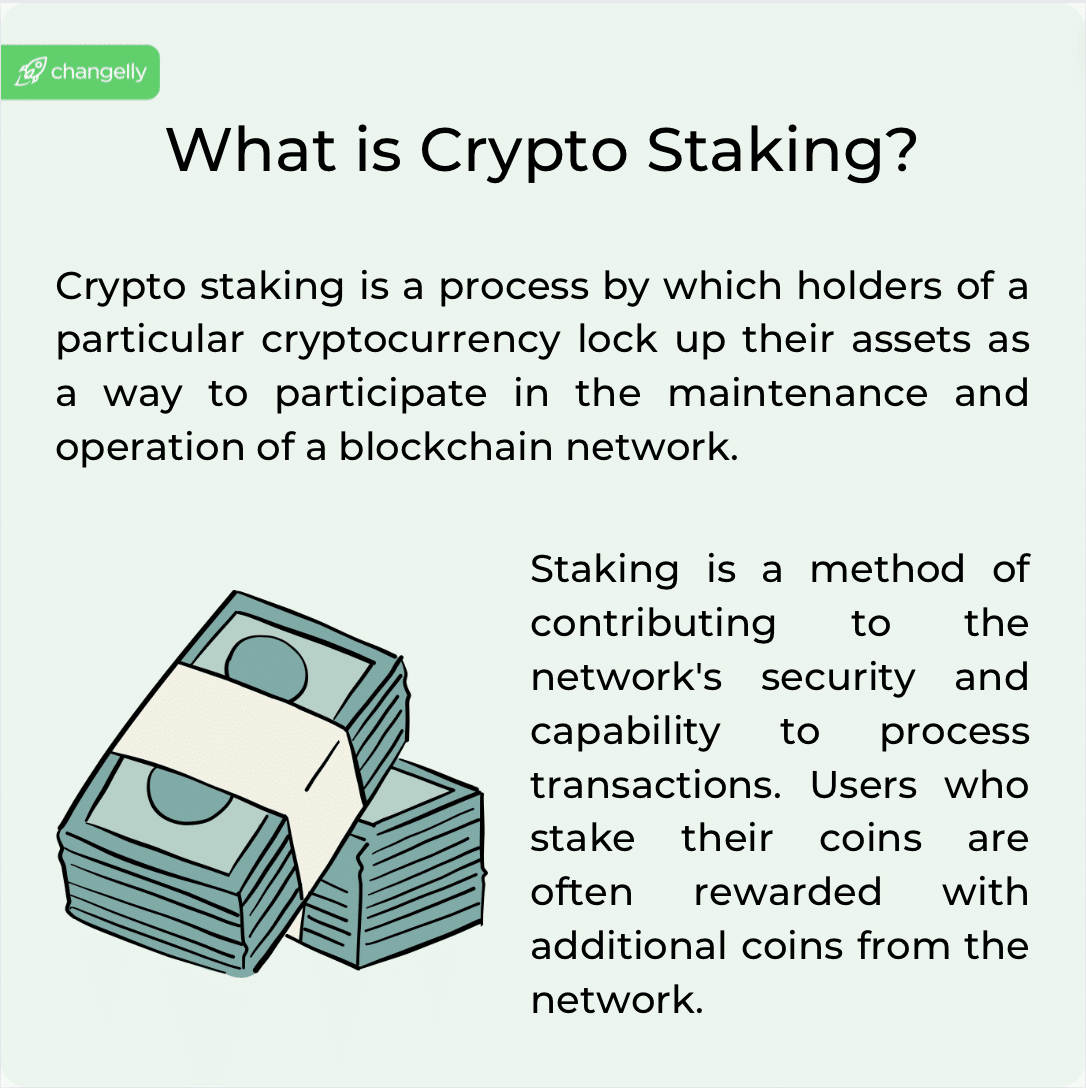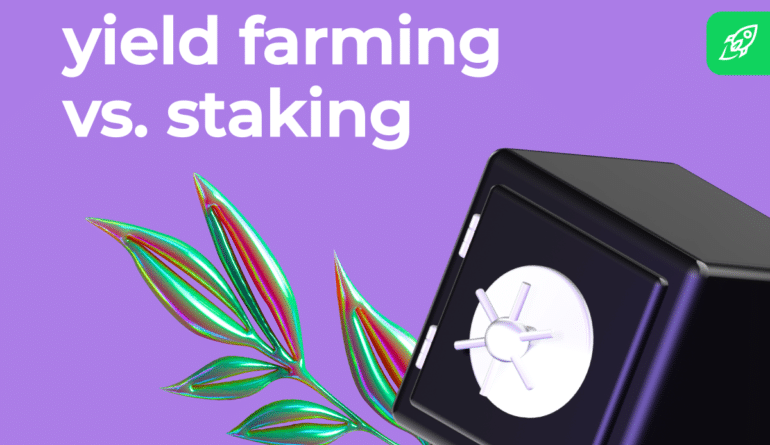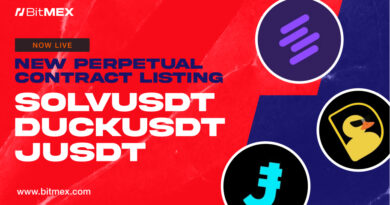Yield Farming vs. Staking: What Is The Difference?
Two of the most popular ways to earn with crypto – yield farming vs staking – offer very different paths to passive income. One taps into liquidity pools and dynamic DeFi strategies, while the other helps secure blockchain networks while earning stable returns. Understanding how they work, what they require, and which fits your risk tolerance is key to making the right moves.
What Is Yield Farming?
Yield farming is a method of earning passive income in decentralized finance (DeFi). It allows you to earn rewards by providing liquidity to decentralized protocols.
Here’s how yield farming works: you deposit your crypto assets into liquidity pools, which then fuel decentralized exchanges, lending platforms, and other DeFi applications. In return, you receive rewards. These come in the form of interest, transaction fees, or governance tokens. The rewards depend on the protocol – some platforms offer higher yields for more volatile or less liquid assets.
Yield farming often involves moving funds between different protocols. You chase the highest returns. This strategy is also called “liquidity mining.” It’s high risk but offers high potential rewards.
Protocols like Uniswap, Aave, and Curve Finance all support yield farming. Each uses its own incentive structure to attract liquidity.
If you’re interested in yield farming or simply investing in DeFi, you should be aware that security is a major concern. Smart contract bugs, rug pulls, and impermanent loss can lead to significant losses. According to PeckShield, the biggest crypto hack in 2024 involved a DeFi protocol, with the total loss crossing over $300M. Make sure to be careful and thoroughly research all the projects you’re interested in.
What Is Staking?
Staking is a way to earn rewards by participating in a blockchain’s consensus process. You lock up your tokens to help validate transactions and secure the network.
Staking is only available on blockchains that use proof-of-stake (PoS) or a variant of it. Ethereum, Cardano, and Polkadot are examples of PoS blockchains.

In exchange for staking your tokens, you earn rewards. These rewards come from newly issued coins or transaction fees. Unlike yield farming, staking usually doesn’t require you to move your funds.
Staking can be divided into many different types. Here are just two of them:
- Direct staking. You run a validator node and stake your own tokens. This requires technical knowledge and a minimum token amount.
- Delegated staking. You delegate your tokens to a validator. The validator shares the rewards with you.
Please note that all blockchains require a different amount of currency to run validator nodes on their network. For example, Ethereum requires 32 ETH. If you have less, you can use staking services like Lido or Rocket Pool instead.
Staking is lower risk than yield farming, but it still has its own potential challenges like validator slashing, protocol bugs, or price volatility.
Key Similarities Between Yield Farming and Staking
Both yield farming and staking allow you to generate passive income without selling your crypto. You commit assets to a protocol and earn rewards in return. When yield farming, you provide liquidity to decentralized platforms. When staking, you help validate transactions on proof-of-stake blockchains.
Both methods involve locking tokens for a period of time. During this time, your assets are exposed to risks like market volatility and smart contract vulnerabilities. Since both rely on smart contracts, you also face potential bugs or exploits.
Learn how to spot scams and protect your crypto with our free checklist.

Key Differences Between Yield Farming and Staking
While yield farming and staking both let you earn passive income with your crypto, they work in very different ways. Let’s break down their key differences.
Purpose
Yield farming is focused on providing liquidity to decentralized finance (DeFi) protocols. You act as a liquidity provider, and your goal is to support decentralized exchanges or lending platforms. In return, you earn rewards. These often come in the form of interest, fees, or additional tokens.
Staking, on the other hand, secures a blockchain network. When you stake, you support its consensus mechanism. You help validate transactions and maintain network stability. Your rewards come from newly minted coins or transaction fees.
In short, yield farming supplies liquidity, while staking supports network security.
How They Work
Yield farming involves depositing tokens into liquidity pools. These pools are used by other users to trade or borrow. You often receive LP (liquidity provider) tokens in return. You can stake these LP tokens elsewhere to boost your returns. Yield farmers move funds across platforms to maximize earnings.
Staking works by locking your tokens in a proof-of-stake blockchain. You can either run a validator node or delegate your tokens to an existing validator. Your tokens help validate blocks and secure the chain. In return, you earn a share of the rewards.
Yield farming requires active management. Staking is more passive.
Potential Returns
Yield farming can offer high annual percentage yield (APY). On some platforms, APYs can exceed 100%, especially for newer or riskier tokens. For example, some pools on PancakeSwap offer triple-digit yields. But those rates are volatile and come with high risk.
Staking usually offers lower but more stable returns. Ethereum’s staking APY usually ranges between 3–5%. Networks like Polkadot and Cardano offer slightly higher rates, depending on network activity.
If your risk tolerance is high, yield farming may be more appealing. If you prefer predictable earnings, staking is a safer bet.
Complexity
Yield farming is complex. It requires frequent monitoring, strategy changes, and understanding multiple DeFi protocols. You need to know how liquidity provision works and how to manage impermanent loss. Advanced users may compound gains by reinvesting rewards into new pools.
Staking is simpler. Many platforms offer one-click staking. With delegated staking, you can earn without running a node or maintaining infrastructure. It’s ideal for long-term holders looking to earn passive income with minimal effort.
When comparing staking vs yield farming, the key tradeoff is often risk vs reward. Yield farming offers higher returns but requires more work and carries more risk. Staking is easier, safer, and more stable.
Deposit Periods
Yield farming usually has flexible deposit terms. You can enter and exit most liquidity pools at any time. However, some yield farming platforms offer time-locked pools with higher rewards. These options can tie up your funds for days or weeks.
Staking may involve locked periods depending on the network. For example, Ethereum has a withdrawal queue for staked assets, and full withdrawal can take several days. Other networks like Solana or Cosmos have unbonding periods ranging from 2 to 21 days.
If your investment strategy requires fast access to funds, yield farming offers more flexibility. Staking is better for long-term commitment.
Transaction Fees
Yield farming typically involves higher fees. Yield farmers often interact with complex smart contracts. They move funds between multiple protocols, harvest rewards, and reinvest. Each step generates gas fees, especially on networks like Ethereum.
Staking, in comparison, is more cost-efficient. You usually stake once, then leave your tokens locked. Some platforms charge a small fee for delegation or reward claiming, but these costs are much lower than in farming.
If you’re operating on a tight budget, staking avoids most of the fee overhead that comes with providing liquidity.
User Involvement
Yield farming requires active involvement. You must monitor market volatility, switch pools, and manage risks like token price fluctuation and impermanent loss. Successful yield farmers provide liquidity across multiple protocols and use advanced strategies like compounding or leverage.
Staking is passive. After you stake your tokens, the process is automatic. You don’t need to monitor protocols or move funds. This makes staking ideal for users who want to earn passive income without constant attention.
When comparing yield farming to staking, the former demands more time and effort.
Reward Types
Yield farming rewards are diverse. You can earn protocol tokens, trading fees, or incentives in new or native tokens. Some platforms boost rewards with multiple tokens. For example, farming on Curve might pay in CRV and a governance token from a yield optimizer.
Staking rewards are simpler. You earn the native token of the blockchain. For example, ETH for staking Ethereum, DOT for Polkadot, or ADA for Cardano. These rewards are usually auto-compounded or manually claimable.
If you want predictable, consistent payouts, staking fits best. For those chasing high, variable returns, yield farming is the play.
Capital Requirements
Yield farming is often more capital-intensive. To cover gas fees and make gains worth the risk, you may need a larger upfront investment. High returns typically come from volatile assets, which can amplify both profit and loss.
Staking requires less capital to start. You can delegate small amounts on most platforms. Running your own validator node, however, requires more, like 32 ETH for Ethereum.
Delegated staking is more accessible for low-cap investors. Yield farming can be profitable, but only with enough capital to offset costs and manage risks.
Technical Knowledge Needed
Yield farming requires a strong grasp of DeFi concepts. You must understand liquidity pools, liquidity pool tokens, yield optimizers, and smart contracts. You also need to evaluate smart contract risk and know how to track returns across multiple protocols.
Staking is much simpler. Most platforms offer intuitive interfaces. You don’t need to understand the inner workings of consensus mechanisms to validate transactions. Just choose a validator or staking provider, and you’re ready to go.
Yield farming appeals to advanced users. Staking suits those with less technical experience who still want to generate passive income.
Requirements
Yield farming involves providing liquidity, usually in trading pairs. That means you need two different assets, like ETH and USDC, in equal value. You must also pay attention to the initial investment and ensure it’s large enough to cover transaction costs and still yield profit.
Staking requires only a single asset. Most PoS networks allow delegation with as little as a few tokens. Some centralized exchanges offer staking with no minimums at all.
The requirements for yield farming are more demanding in terms of capital, tools, and asset pairing. Staking has lower entry barriers.
Risks and Challenges
Yield farming carries significant risks. You face liquidity risks, market volatility, and smart contract vulnerabilities. If a protocol is exploited or a developer pulls liquidity (a rug pull), you can lose your funds. There’s also impermanent loss, which happens when token prices shift while your assets are in a pool.
Staking is safer but not risk-free. You could lose rewards due to validator misbehavior or network slashing. Price volatility can also affect the value of your staked assets during the lock-up period.
Time Commitment
Yield farming is hands-on. You need to track pools, switch strategies, and harvest and reinvest rewards regularly. This approach suits users who enjoy actively managing their portfolios.
Staking is “set and forget.” Once your tokens are locked, you don’t need to do anything. You earn rewards automatically.
Suitable Assets
Yield farming is best for stablecoins, DeFi tokens, and assets with a strong trading volume. Popular tokens for farming include USDC, ETH, DAI, and platform-native tokens like CAKE or CRV. These assets help maintain liquidity and minimize slippage.
Staking works with the native token of a PoS blockchain. You can’t stake just any asset – it must belong to the network. ETH for Ethereum, SOL for Solana, and so on.
Choose yield farming if you want to deploy a wide range of tokens in liquidity pools. Choose staking if you hold native tokens and want to grow them over time.
Comparison Table: Yield Farming vs Staking

Pros and Cons of Yield Farming
No matter what investment strategy you’re going for, yield farming vs staking, it’s important to understand its strengths and weaknesses.
Considering trying yield farming? Let’s take a look at the pros and cons of this method of earning a passive income with crypto.
Pros
- High potential returns. Some yield farming platforms offer APYs over 100%, especially in new or high-risk pools.
- Flexible participation. You can often enter and exit liquidity pools at any time.
- Multiple reward streams. You may earn interest, protocol tokens, and bonus incentives all at once.
- Advanced strategies available. Yield farmers can compound returns by reinvesting or stacking DeFi services.
Cons
- High risk exposure. Smart contract bugs, rug pulls, and impermanent loss can lead to significant losses.
- Requires technical knowledge. Managing pools, LP tokens, and yield optimizers is complex.
- High transaction costs. Yield farming on Ethereum can involve expensive gas fees.
- Volatile returns. APYs can change rapidly depending on token prices and market activity.
Pros and Cons of Staking
Now, let’s move on to the advantages and disadvantages of staking.
Pros
- Stable passive income. Most staking networks offer predictable and consistent returns.
- Lower technical barrier. Staking can often be done with one click via exchanges or wallets.
- Supports the network. Your staked tokens help validate transactions and secure the blockchain.
- Lower risk. No impermanent loss and fewer interactions with third-party protocols.
Cons
- Lock-up periods. Some blockchains require unbonding periods before you can withdraw funds.
- Limited asset flexibility. You can only stake a blockchain’s native token.
- Lower returns. Compared to yield farming, staking usually offers less aggressive growth.
- Slashing risk. Misbehaving validators can be penalized, affecting your rewards or principal.
Popular Platforms to Get Started
Here are some trusted platforms to begin yield farming or staking, depending on your strategy and risk level.
Yield Farming Platforms
- Uniswap – A leading decentralized exchange.
- Curve Finance – Optimized for stablecoin farming with lower impermanent loss.
- PancakeSwap – High-yield opportunities on BNB Chain with lower fees.
- Yearn Finance – Automates farming strategies across DeFi protocols.
Staking Platforms
- Ethereum – Stake 32 ETH to run a validator node or use pooled services like Rocket Pool.
- Lido – Offers liquid staking for ETH, SOL, and other PoS tokens.
- Binance – Centralized exchange offering easy staking for dozens of tokens.
- Kraken – Simple interface with flexible and locked staking options.
Who is Yield Farming Suitable For?
Yield farming is best for experienced crypto users who understand DeFi, liquidity pools, and smart contract risks. It suits those with higher risk tolerance, enough capital to cover fees, and time to actively manage positions.
If you’re comfortable with complex tools and want to maximize returns by moving between platforms, yield farming is your best bet.
Who is Staking Suitable For?
Staking is ideal for long-term holders who want to generate passive income with lower risk. It’s suitable for users who prefer a “set and forget” strategy, don’t want to manage multiple protocols, and are holding native PoS tokens.
If you value stability, simplicity, and consistent rewards, staking is a better fit.
FAQ
Is staking safer than yield farming?
Yes, staking is generally safer than yield farming. Yield farming involves providing liquidity to complex DeFi protocols, which increases the likelihood of risk factors like smart contract bugs, impermanent loss, and rug pulls. If your risk tolerance is low, staking is the better option.
How much can I realistically earn from yield farming?
Returns vary widely based on the platform, token, and strategy. Many yield farmers earn between 10% and 50% annual percentage yield (APY), while high-risk pools may exceed 100%. However, these returns are not guaranteed and depend on market liquidity and token prices. Always factor in fees and volatility.
Can I lose money while staking?
Yes, you can. While staking is lower risk, you’re still investing in cryptocurrencies, and your crypto assets are still exposed to price drops. Some networks may also apply slashing penalties if a validator misbehaves. However, you won’t face risks like impermanent loss common in liquidity provision.
What’s the minimum amount to get started?
It depends on the platform. Many liquidity mining or staking services have no strict minimums, especially on exchanges like Binance or Lido. However, running a validator node may require significant capital, such as 32 ETH on Ethereum. For most users, though, even a small amount can begin earning passive income.
How do I know if a yield farming or staking platform is safe to use?
Check for audits, open-source code, and platform reputation. Reputable DeFi protocols usually publish third-party audits and have transparent teams. Platforms with a strong track record and large liquidity pools tend to be safer for liquidity providers. Avoid new projects without reviews or documentation.
What happens if the price of my crypto drops while I’m staking or yield farming?
You’ll still receive rewards, but the value of your crypto assets may decrease. In yield farming, this can be worse due to impermanent loss if token prices diverge. In staking, price drops affect the value of your staked holdings but not the number of tokens you earn. Your returns are still tied to market performance.
Is it better to stake/farm with stablecoins to avoid price drops?
Yes, using stablecoins can reduce exposure to volatility. In yield farming, pairing stablecoins in liquidity pools can generate returns with lower risk. Some platforms offer stablecoin staking as well, though rewards are usually lower. This is a smart move for conservative investment strategies.
How often should I check on my yield farming positions?
You should check your positions at least once a day. Yield farming rewards and pool conditions can change quickly. Tracking liquidity provision and adjusting your strategy is key to staying profitable. Unlike staking, yield farming requires active monitoring.
Disclaimer: Please note that the contents of this article are not financial or investing advice. The information provided in this article is the author’s opinion only and should not be considered as offering trading or investing recommendations. We do not make any warranties about the completeness, reliability and accuracy of this information. The cryptocurrency market suffers from high volatility and occasional arbitrary movements. Any investor, trader, or regular crypto users should research multiple viewpoints and be familiar with all local regulations before committing to an investment.
The post Yield Farming vs. Staking: What Is The Difference? appeared first on Cryptocurrency News & Trading Tips – Crypto Blog by Changelly.
Cryptocurrency News & Trading Tips – Crypto Blog by Changelly




















